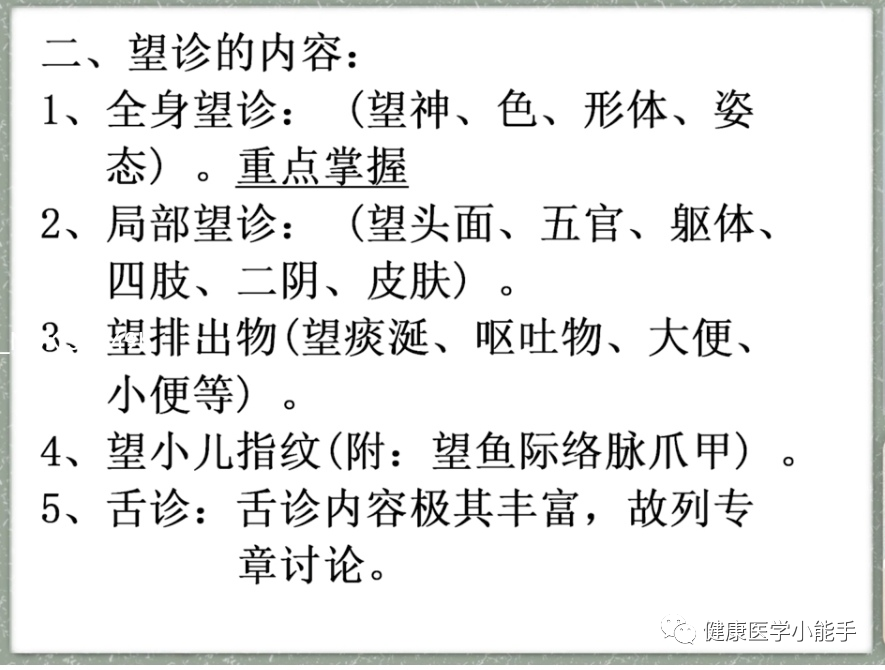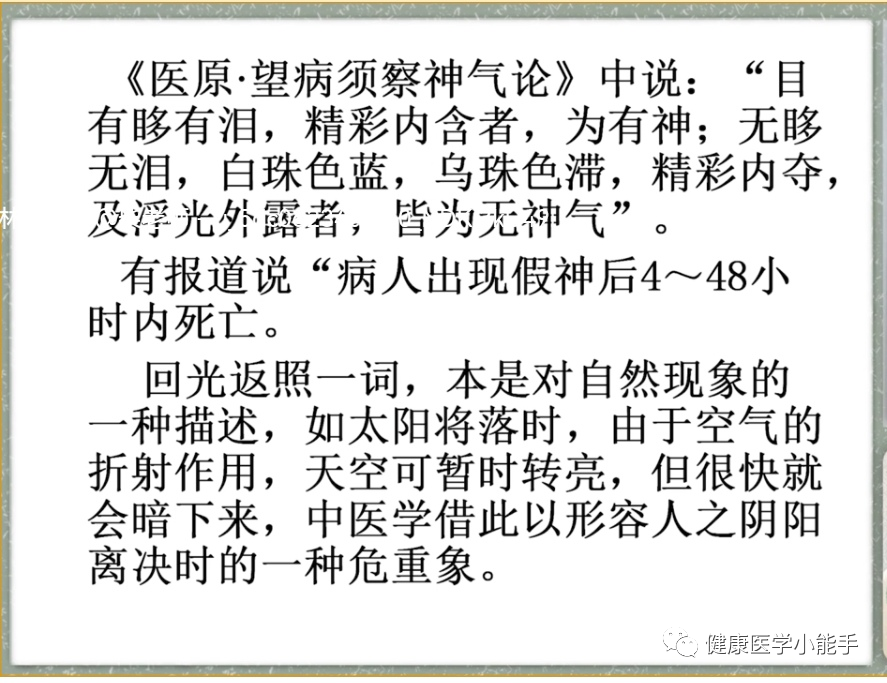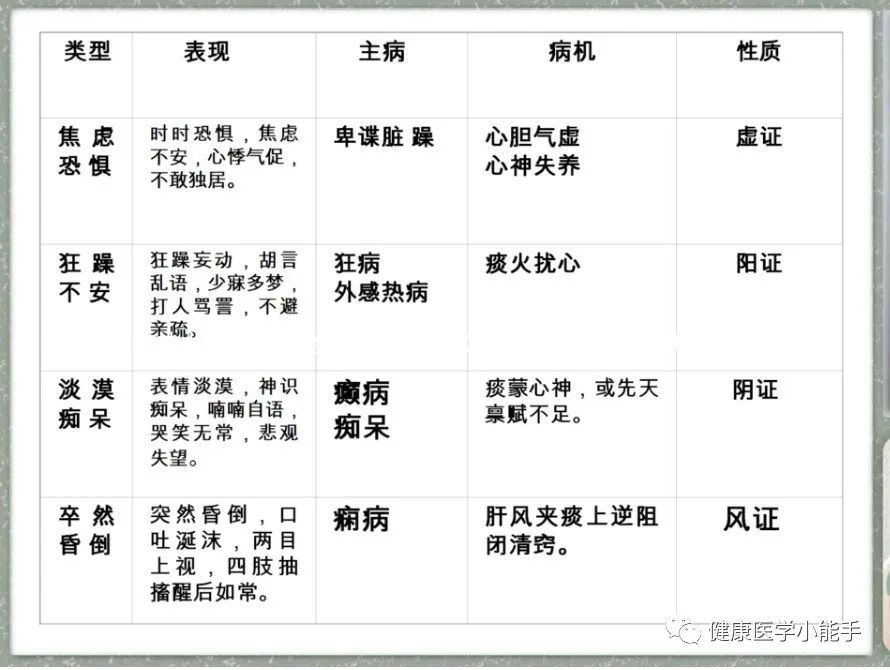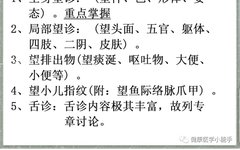From the moment the patient enters the room, the TCM practitioner is already observing the patient. This is known as wang zhen (observation diagnosis), which is essential for capturing and understanding basic information.
Why is this important? In TCM, the practitioner treats a person, not just a disease, distinguishing it from Western medicine. TCM emphasizes a holistic view.
Watch the video to learn more
1. Overview
This method involves the physician using visual observation to assess the patient’s complexion, body shape, local manifestations, tongue appearance, secretions, and the color of excretions to understand the condition.
“Knowing through observation is called Shen”, indicating the significant role of observation diagnosis in TCM diagnostics.
Doctors generally complete observation diagnosis unconsciously, but they can also focus on specific areas related to certain diseases.
2. Content of Observation Diagnosis
1. General Observation: (observing Shen, color, body shape, posture)
2. Local Observation: observing the head, face, five senses, body, limbs, and skin
3. Observation of Excretions: observing phlegm, vomit, feces, and urine
4. Observation of Children’s Fingerprints: observing children’s fingerprints, thenar, collateral vessels, and nails
5. Tongue Diagnosis: tongue diagnosis has extensive content, which will be discussed in a dedicated chapter later.

Conceptual Analysis
Distinguishing between abnormal mental states and loss of Shen
Key Points
1. Main content of observing Shen
2. Characteristics and clinical significance of gaining Shen, losing Shen, false Shen, and chaotic Shen
3. The significance of the five colors in disease
4. Common abnormal body postures
3. Precautions
1. First, ensure that your vision is sensitive to certain colors; areas that are less sensitive should be observed multiple times.
2. Pay attention to lighting; natural light is preferable for more accurate judgments.
3. Be aware of the room temperature.
4. Ensure that the examined areas are fully exposed.
5. Consider the overall assessment.
6. Observe dynamically; some individuals may not feel pain while sitting but may experience pain upon slight movement of related joints.
7. Integrate with other diagnostic methods.
Section 1: General Observation
Concept: General observation is the initial assessment of the patient’s complexion and overall presentation to understand the changes in their condition.
Significance: It provides an overall impression of the severity of the condition and the nature of the disease (cold, heat, deficiency, excess), laying the foundation for further detailed observation.
For example, if a patient walks in confidently, with a loud voice and a slight smile, their condition is likely mild, so capturing overall information from the moment they enter is crucial.
“Immediate awareness” comes from rich experience, and a physician’s experience often develops through repeated patterns, enhancing their ability to recognize disease patterns quickly, allowing for “intuitive diagnosis” or “subconscious insights” in a short time.
1. Observing Shen
(1) Overview
Shen: is a high-level summary of life phenomena, referring to the functional activities of the body’s organs and the state of mental consciousness, a comprehensive judgment of Shen Qi and Shen Zhi.
From a medical perspective, “function” refers to Shen; this term was introduced from the West, while Shen represents the physiological activities expressed externally.
Observing Shen: is a method of examining the condition based on the comprehensive performance of life activities.
1. Principles of Observing Shen
Shen is the master of life and one of the three treasures of the human body (the three treasures: Jing, Qi, Shen), closely related to Qi. Shen can be expressed through the comprehensive performance of color and shape.
2. Significance of Observing Shen
By observing Shen, one can gain an overall understanding of the vitality of the organs, the existence of life, and thus determine the severity and prognosis of the condition.
For example, there is a saying in the Suwen: “Those who gain Shen thrive; those who lose Shen perish.”
If someone experiences “loss of Shen,” they may appear unfocused and dazed, indicating that Qi has dispersed, and the person is weakened.
(2) Main Content of Observing Shen
Although the manifestations of Shen are diverse, the focus of observing Shen lies in the eyes, spirit, complexion, and posture.
1. The Eyes
The eyes are the windows to the soul; a person’s mental activity often unconsciously reveals itself through their gaze, which is connected to the brain and influenced by mental control, making the eyes capable of conveying Shen.
Tips: The eyes directly reflect a person’s Shen.
2. Spirit
This refers to a person’s mental awareness and facial expressions, which are governed by the heart, the “ruler” of the body, playing a crucial role in life activities.
For instance, if the spirit appears anxious, it indicates an excess of heart fire.
3. Complexion: This refers to the color of the skin and surface tissues, which reflects the vitality of the organs.
4. Posture: This refers to the dynamic movements and ease of actions, which are primary indicators of the body’s functional strength.
Tips: A healthy posture should be robust; excessive thinness or sunken cheekbones often indicate Yin deficiency or issues with the spleen and stomach.
(3) Classification and Judgment of Shen
Based on the vitality of Shen and the severity of the disease, Shen can be roughly classified into gaining Shen, losing Shen, false Shen, less Shen, and chaotic Shen. Below are the characteristics and clinical significance of each type based on observation methods.
1. Gaining Shen
This indicates a robust expression of Shen, characterized by abundant Qi.
(1) Manifestations: Clear consciousness, bright eyes, steady breathing, clear speech, rosy complexion, well-toned muscles, agile movements, and quick responses.
(2) Clinical Significance: Indicates sufficient Zheng Qi (upright Qi), abundant vitality, and normal body function, representing health.
For example, the concept of magnetic fields in Western medicine corresponds to Qi in TCM; every cell and object in the body is in motion, generating energy. Healthy energy is desirable, which is why we are drawn to it.
(3) Classification:
Heart Qi is abundant: Clear consciousness, clear speech, rosy complexion, and natural expressions.
Liver and Kidney Qi is abundant: Bright eyes, lively expressions, quick responses, agile movements, and natural posture.
Spleen and Lung Qi is abundant: Steady breathing and well-toned muscles.
In summary, this is the Shen of a healthy person; even if there is illness, the organ functions are not diminished, leading to good recovery.
2. Less Shen
This indicates mild loss of Shen.
(1) Manifestations: Lack of energy, dull eyes, pale complexion, soft muscles, fatigue, and slow movements.
(2) Clinical Significance:
Indicates insufficient Zheng Qi, mild damage to vitality, and weakened body function, often seen in mild illnesses or recovery phases, and may also occur in individuals with weak constitutions. Less Shen is often due to deficiency of both the heart and spleen or insufficient kidney Yang.
Tips: The most obvious characteristic is that the person appears to have collapsed, like a plant that wilts after a few days without water. Those with less Shen often yawn and feel weak; such individuals can recover easily and are unlikely to have severe illnesses.
3. Losing Shen
(1) Concept: Also known as “no Shen,” this indicates a state of Qi deficiency and chaotic Shen.
(2) Significance: Indicates that both deficiency and excess are severe; deficiency indicates significant damage to Zheng Qi, while excess indicates rampant pathogenic Qi, disturbing the spirit, or phlegm obstructing the heart and liver, clouding the mind and blocking the meridians.
Tips: The body’s active substances have decreased, similar to the reduction of active peptides in Western medicine.
(3) Classification:
Heart Qi is depleted: Confused speech, dark complexion.
Liver and Kidney Qi are both depleted: Dull eyes, slow responses, and difficult movements.
Lung and Spleen Qi are exhausted: Weak breathing and emaciated appearance.
Heat disturbing the spirit: High fever, thirst, and limb spasms.
Pathogenic Qi invading the heart: Confusion, incoherent speech, and aimless movements.
4. False Shen
(1) Concept: This refers to a temporary “improvement” in the patient’s spirit, which is a false sign, often indicating a terminal stage.
(2) Significance: Indicates severe depletion of Qi, impending loss of Zheng Qi, and the inability of Yin to contain Yang, leading to a critical condition.
Tips: The most obvious manifestation is a sudden brightness in the eyes.

What is false Shen?
False Shen is a deceptive phenomenon where critically ill patients appear to have a “sudden improvement” in spirit. This usually occurs in patients with prolonged or severe illness who have already lost Shen but suddenly regain clarity, bright eyes, desire to eat, and wish to see loved ones, with a pale complexion and rosy cheeks. This localized improvement does not correspond with the overall worsening of the disease, indicating extreme depletion of organ Qi and impending loss of Zheng Qi, with Yin unable to contain Yang, leading to a critical condition.
5. Chaotic Shen
(1) Concept: Also known as “mental confusion” or “abnormal consciousness,” this refers to abnormal manifestations of consciousness due to insufficient Zheng Qi and internal disturbance from pathogenic factors, affecting the spirit, often seen in patients with manic-depressive disorders.
(2) Clinical Manifestations: Anxiety, fear, agitation, indifference, dementia, sudden fainting, and often recurring episodes with no abnormal consciousness during remission.

(3) Precautions for Observing Shen
1. Pay attention to the first impression of the patient, achieving “immediate awareness”, as the expressions revealed by the patient unconsciously are the most genuine.
2. Ensure the integration of form and spirit
The relationship between form and spirit is closely related, with both consistency and inconsistency; for example, if the form is robust but the color is dull, even if the consciousness is clear, it still indicates loss of Shen.
3. Focus on important features and signs
Some symptoms and signs are crucial for judging loss of Shen, such as confusion and emaciation; their appearance indicates severe illness.
4. Distinguish between false Shen and genuine improvement in severe illness
In genuine improvement, the mental state gradually improves and corresponds with overall health improvement, while false Shen shows sudden mental clarity that does not align with the overall worsening of the condition.

